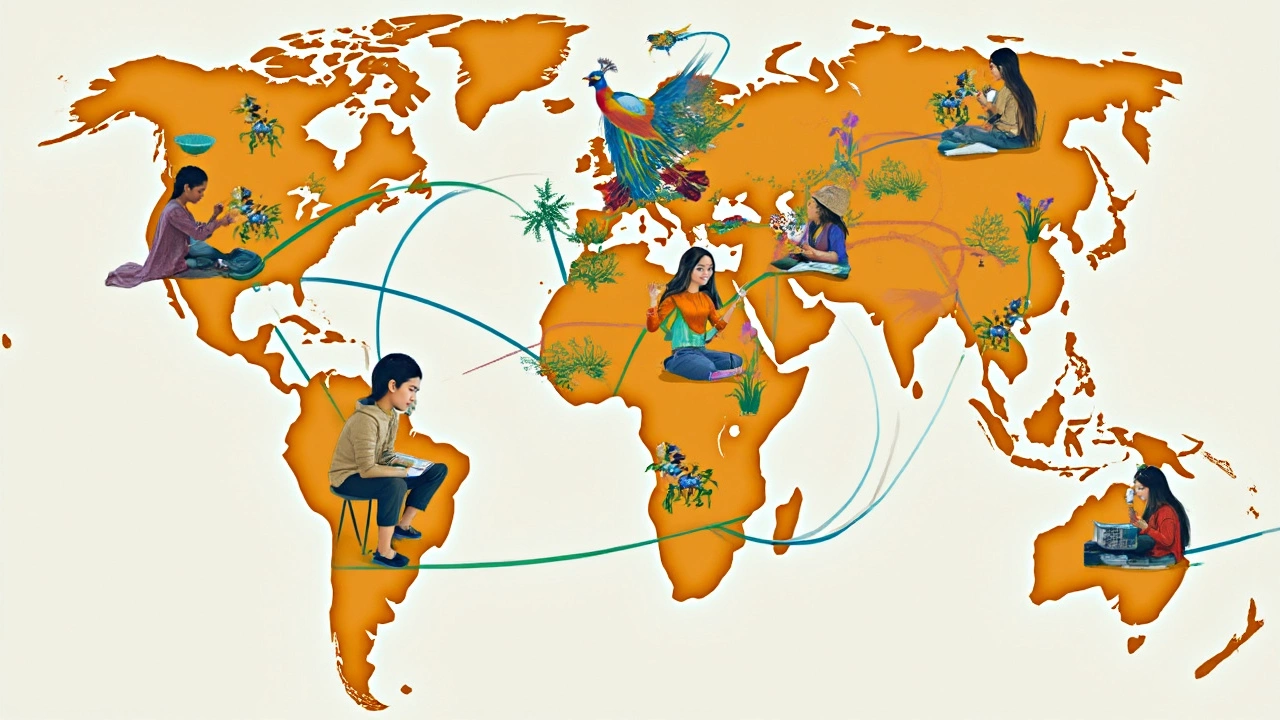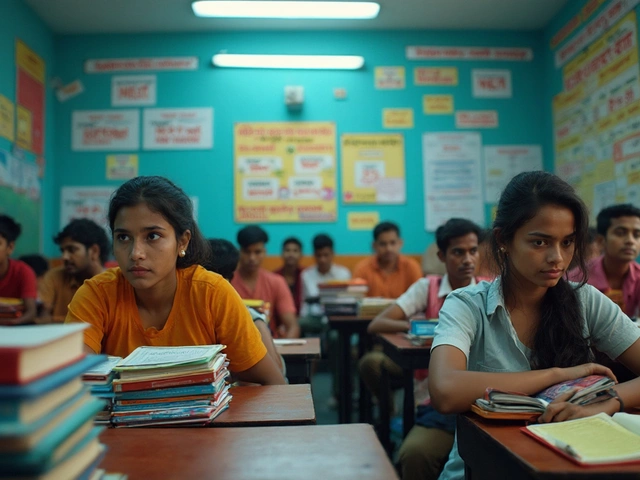If you've been in India or interacted with Indian education circles, you've likely heard of CBSE – the Central Board of Secondary Education. It's a big deal there, but is it only a national affair? Well, no. CBSE is spreading its wings beyond India.
CBSE’s curriculum has made its way into schools in over 25 countries. Sounds surprising? You might wonder why non-Indian schools would choose CBSE. One reason is its balanced approach to both academics and co-curricular activities, making it a hit among students and parents.
- Understanding CBSE's Foundation
- CBSE’s Influence Outside India
- Why Non-Indian Schools Opt for CBSE
- CBSE Curriculum Highlights
- Tips for Navigating the CBSE System
Understanding CBSE's Foundation
The CBSE, or Central Board of Secondary Education, got its start back in 1929. It wasn't this big, all-encompassing organization right at the get-go. Initially, it aimed to provide a common standard for secondary-level education in India.
What's intriguing is how CBSE evolved post-Independence. By the time the 1960s rolled in, it became a national board in response to India's expanding educational needs and diverse demographics. This transformation was fueled by the country's desire to standardize education quality across states.
Structure and Purpose
CBSE isn't just a board sitting in offices; it plays a crucial role in developing textbooks, curriculum guidelines, and assessment methods. Ever heard of the NCERT books? These are developed in tandem with CBSE’s structured guidelines, aimed at offering students a consistent and comprehensive learning experience.
- Standardization across schools ensures uniform educational quality.
- Aims to incorporate both academic and skill-based learning.
How CBSE Stands Out
Unlike regional boards, CBSE's curriculum focuses on a range of subjects, emphasizing math and science. You might find that the syllabus is periodically updated to keep it fresh, relevant, and in tune with modern educational demands.
One notable feature is its continuous and comprehensive evaluation method. Instead of relying solely on final exams, CBSE encourages a mix of projects, practicals, and regular tests. This approach not only relieves pressure but also cultivates a deeper understanding of subjects.
To wrap it up, CBSE’s strong foundation isn't just about rigorous academics. It's about preparing students for life with the right mix of knowledge and skills, making it a sought-after education board not only in India but also globally.
CBSE’s Influence Outside India
Believe it or not, the CBSE isn't just an Indian thing anymore. It's making waves globally. Over the years, CBSE has expanded, with more than 240 schools in countries including the UAE, Singapore, and Nepal. It's fascinating how Indian expatriates find comfort in the familiar curriculum, but the real clincher is how it's capturing local students worldwide.
One of the main reasons for its popularity abroad is its well-structured curriculum. CBSE provides a solid foundation in sciences, arts, and languages, making it attractive for students aiming for versatility. Plus, it's recognized by most colleges and universities around the world, giving students an edge when applying for higher studies.
Why Schools Choose CBSE
So, what's the deal? Why do international schools opt for CBSE over local or other international boards? Often, it's the flexibility of the CBSE system, allowing schools to tailor some content to better fit their local context while maintaining the core academic standards.
Localized Approach
Some schools in the Middle East incorporate Arabic culture and language while still following the CBSE guidelines. This dual exposure broadens student perspectives, a win-win for parents looking for cultural relevance combined with global acceptance.
Another exciting aspect is the emphasis on student well-being and holistic development, something many schools are prioritizing. This approach equips students with strong analytical skills and creative thinking abilities.
| Country | Number of CBSE Schools |
|---|---|
| UAE | 75 |
| Singapore | 2 |
| Nepal | 20 |
The data speaks for itself. These numbers keep growing as more countries recognize the benefits of CBSE's balanced and rigorous system, blending academic excellence with essential life skills.

Why Non-Indian Schools Opt for CBSE
You might think, why would schools outside India choose CBSE instead of their local systems? Well, there are several reasons for this trend.
The Global Exposure
CBSE offers a curriculum that's recognized worldwide. Schools aiming to provide a global perspective prefer CBSE because its syllabus incorporates international knowledge benchmarks, giving students an edge in global education standards.
Structured and Rigorous Curriculum
Parents and educators outside India appreciate CBSE’s structured approach. The board places strong emphasis on mastering subjects, and it breaks down complex topics into easily understandable units. There's a clear path for students, making it easier for schools to track progress and maintain high educational standards.
Focus on Holistic Development
Another reason schools abroad opt for CBSE is its focus beyond academics. For instance, CBSE encourages participation in sports and the arts. This balance helps in developing well-rounded individuals, a quality that many international educators value.
Successful Results and Recognition
The success rates for students under the CBSE system are impressive. Not only do students score well, but they also have high acceptance rates in prestigious universities globally. This reputation attracts non-Indian schools looking to provide competitive advantages to their students.
Efficiency and Availability
CBSE is known for its efficiency in conducting centralized exams, which reduces the administrative load on schools. Plus, CBSE provides readily available teaching resources and support, which facilitates smooth adoption of its curriculum in foreign schools.
CBSE isn’t just growing in India; it's making a mark in the global education scene. With its well-designed curriculum and holistic focus, it's no wonder that non-Indian schools are keen to embrace it.
CBSE Curriculum Highlights
When it comes to the CBSE syllabus, the emphasis is on a student's holistic growth. Forget rote learning; CBSE is all about getting students to think!
The Structure
The curriculum is structured to balance theory and application, which means subjects are taught in a way that relates to real-world scenarios. This method makes learning relatable and less abstract. For each school grade, there's a defined set of subjects that cater to different streams like Science, Commerce, and Humanities at the higher secondary level.
Main Subjects
CBSE keeps the core subjects as the foundation across levels. Mathematics, Science, and English are emphasized, providing an essential base whatever field a student chooses later. The curriculum also supports options like Computer Science, Physical Education, and even various vocational subjects, appealing to diverse student interests.
Continuous Evaluation
The journey doesn't end with just learning. Students undergo Continuous and Comprehensive Evaluation (CCE), which splits their assessment into various segments rather than one big exam. This policy helps in reducing stress and promoting regular study habits.
Emphasizing Life Skills
The board isn't just about textbook teaching. Life skills such as communication, problem-solving, and decision-making are also woven into the curriculum. The idea is to prepare students for life, not just exams.
Digital and Technological Edge
CBSE is riding the tech wave too. It encourages the use of digital resources in education, making tech-based learning tools and study materials available so students can explore beyond their textbooks. This digital push helps in making learning exciting and up-to-date.
Comparative Overview
| Feature | CBSE | Other Boards |
|---|---|---|
| Focus on Application | High | Varies |
| Life Skills Integration | Prominent | Limited |
| Global Presence | 25+ countries | Specific regions |
So, there you have it. The CBSE curriculum is not just about textbooks and exams. It's a well-thought-out system aiming to nurture both academic abilities and essential life skills, preparing children for the challenges of tomorrow.

Tips for Navigating the CBSE System
Getting a grasp on the CBSE system isn't rocket science, but a little guidance never hurts. Here are some practical tips to help you or your kid make the most out of the CBSE experience.
1. Understanding the Curriculum
The first step is getting to know the curriculum like the back of your hand. We've all heard of English, Math, and Science, but CBSE offers way more, including vocational subjects and rich language options. Familiarize yourself with the CBSE syllabus outlined on their official website. It’ll ensure you’re not missing out on any vital subjects or activities.
2. Embrace a Balanced Study Routine
CBSE is known for its balanced mix of academics and extracurriculars. Try to devise a study schedule that doesn’t just focus on cramming but also includes breaks for activities. Studying smart is better than studying hard, right? Don’t forget to utilize the many CBSE-approved guides and resources available online.
3. Make Use of NCERT Books
The National Council of Educational Research and Training (NCERT) books are the backbone of the CBSE syllabus. They are not just recommended but essential. These books are well-structured and conceptual, ensuring you have the best learning resource.
4. Leverage Technology
In this digital age, learning isn’t confined to books. With e-learning platforms booming, students can access videos, quizzes, and online classes aligned with the CBSE curriculum. Platforms like Khan Academy and Byju’s offer great content specifically tailored for CBSE students.
5. Stay Updated
The education scene is constantly evolving. Follow CBSE’s official announcements for updates on exam patterns, marking schemes, and general changes. Most importantly, stay calm during exam seasons. Stressing over exams doesn’t help; preparation does.
And a little tip from my end: don't shy away from asking questions, whether it’s to your teachers or fellow students. Remember, understanding wins over rote learning any day in the CBSE world!









0 Comments